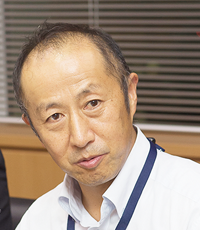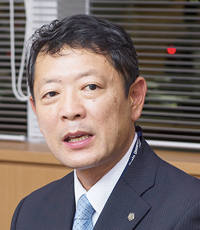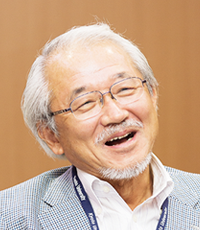Multiple types of academic ability evaluation tests (provisional) are also required for university admission applicants
Principal Hiroshi Ohno (Toyama High School)
I think that the simultaneous test is a necessary evil for high school students who take the exam.As a matter of fact, there is competition in so-called difficult universities, and in order to pass the university you want to enter, you need to know your chances of passing.A simultaneous test that allows you to objectively grasp your "scholastic ability" to some extent is necessary.
The problem is that one type of test cannot be expected to be used by all participating universities.In the current center test, a correct answer rate of around 90% is required to pass the medical department of the national public university medical school, which means that speed and attention are examined instead of thinking ability.I think it is a step forward to divide into two types with this reform, but I think that it is necessary to make some problems for those who want to enter university.
In parallel with the entrance examination reform discussion, hurry up the education reform discussion for each high school and university
Principal Akira Takeuchi (Hibiya High School)
If reforms are promoted with the logic that "a new test that can be objectively evaluated is necessary as a unified standard for universities to select students," I cannot agree.The current National Center Test for University Admissions plays that role.In the global society, it is required to develop human resources who collaborate with others and connect the goodness of various human resources to create new knowledge.For that purpose, it is necessary to foster students who are truly pursuing academic research at the university, and as a preliminary step, it is necessary to foster high school students who can enthusiastically pursue academic exploration rather than aiming to enter the university. Has been done.I feel that the discussion on the educational content of high school and university is inadequate, as the discussion precedes only the part of high school connection.
Taking multiple exams as a good opportunity to know your strength
Yukio Yanagisawa, Principal (Kaisei Gakuen Kaisei High School)
There is competition where you can choose freely, and the severity of the competition is determined by the number of applicants.No one wonders why there is competition in sports, training for it, and convincing yourself with the match.Similarly, university entrance exams are also a competition, and if there is an element that can be convinced of one's ability through the competition, the self-awareness of young people will deepen and it will have a positive effect on career selection.From that point, if a test that can be taken multiple times like SAT is introduced, I think it will be a good opportunity to recognize one's ability.
Career guidance in high school requires more detail than before
Principal Shino Takenashi (Toshimaoka Girls' Academy High School)
I agree with the direction that high school evaluates academic ability by a simultaneous test, and university selects enrollees by multifaceted and comprehensive evaluation based on the admission policy.As the individual selection of universities diversifies in the future, I think that schools will be required to have a more detailed support system than before, such as providing accurate examination information for each university in order to fulfill the aspirations of each student. ..
Click here for the previous roundtable discussion article
Juichi Yamagiwa
Graduated from Faculty of Science, Kyoto University in March 1975
March 1977 Completed Master's Program, Graduate School of Science, Kyoto University
March 1980 Kyoto University Graduate School of Science Doctoral Program Research Guidance Certification
May 1980 Dropped out of the doctoral program at the Graduate School of Science, Kyoto University
June 1980, 6 Japan Society for the Promotion of Science Encouragement Researcher
April 1982, 4 Kyoto University Trainee
January 1983, 1 Research Fellow, Japan Monkey Center
July 1988, 7 Assistant Professor, Primate Research Institute, Kyoto University
January 1998, 1 Associate Professor, Graduate School of Science, Kyoto University
July 2002, 7 Professor, Graduate School of Science, Kyoto University
April 2009, 4 Councilor, Education and Research Council, Kyoto University (until March 1, 2011)
April 2011, 4 Dean of Graduate School of Science, Kyoto University, Dean of Faculty of Science (until March 1, 2013)
April 2012, 4 Member of the Kyoto University Management Council (until March 1, 2013)
Incumbent from October 2014, 10
Born in Tokyo Metropolitan National High School





